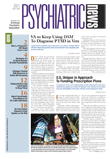A few years ago, researchers thought that seasonal affective disorder (SAD) was simply due to the shorter days of winter. Then they realized that SAD probably has a circadian (24-hour) rhythm component as well. In other words, bright-light therapy is known to shift people's biological clocks, and also known to counter SAD depression. So it seemed plausible that people with SAD become depressed in winter because the later dawn shifts their biological clocks later with respect to real time and their sleep/wake cycles.
But now it looks as though not all people with SAD have tardy biological clocks, a new study suggests. In fact, it may be that a few have biological clocks that tick too fast.
The investigation was headed by Alfred Lewy, M.D., Ph.D., vice chair of psychiatry at Oregon Health and Science University. Results were published in the May 9 Proceedings of the National Academy of Sciences.
Lewy and his colleagues selected 68 individuals diagnosed with SAD to participate in their double-blind, placebo-controlled, three-week winter trial. The subjects were randomly placed in one of three groups. A group of 22 subjects were given low-dose melatonin capsules each afternoon for three weeks to advance their biological clocks because giving a small dose of exogenous melatonin in the afternoon, when the body does not normally produce melatonin, is known to advance the clock. In fact, the afternoon melatonin served as a proxy for morning light therapy since the latter is difficult to study in double-blind, placebo-controlled trials.
Another group of 22 subjects were given low-dose melatonin capsules each morning for three weeks to delay their biological clocks. In short, the morning melatonin served as a proxy for evening light therapy.
The remaining 24 of the 68 subjects served as controls. Each day they received capsules of a placebo, instead of melatonin, during the three weeks of observation.
All subjects were assessed for levels of depression at both the start and end of the study. The scientists then compared depression outcomes for the three groups.
Seventeen of the subjects—11 from the first group and six from the second—experienced a substantially greater reduction in depression than the placebo group did (34 percent versus 14 percent). However, the remaining 27 subjects in the two active groups did not. Why the 17 subjects showed a substantial reduction in depression while the 27 subjects did not was because the improved group had received the correct treatment for their body clocks (afternoon melatonin for the prototypical phase-delayed subjects and morning melatonin for the atypical phase-advanced subjects), according to the researchers.
So there seem to be two types of SAD patients, Lewy and his team concluded. The biological clocks of most shift later in winter, so they will respond to morning light treatment. A minority, however, may have biological clocks that shift earlier in winter, so they will respond to evening light treatment.
“The old thinking was that [the cause of SAD] was the shorter day,” said lewy in an interview. “The new thinking is that it is either the later dawn or the earlier dusk.”
These findings also have a practical implication, Lewy pointed out. A test to determine which SAD patients have slow clocks, and thus would respond to morning light therapy, and which SAD patients have fast clocks, and thus would respond to evening light therapy, is available only for research purposes. However, it may become clinically available in a year or two.
Now that SAD seems to show a strong biological-clock component, it is time to see whether there might also be a circadian-misalignment component to nonseasonal depression, Lewy asserted. Its role may be minor, he said, but“ even if the role is small, it is so easy to treat. You can give light to just about anybody. It is extremely safe.”
The study was funded by the Public Health Service and the National Alliance for Research on Schizophrenia and Depression.
An abstract of “The Circadian Basis of Winter Depression” is posted at<www.pnas.org/cgi/content/abstract/103/19/7414>.▪
